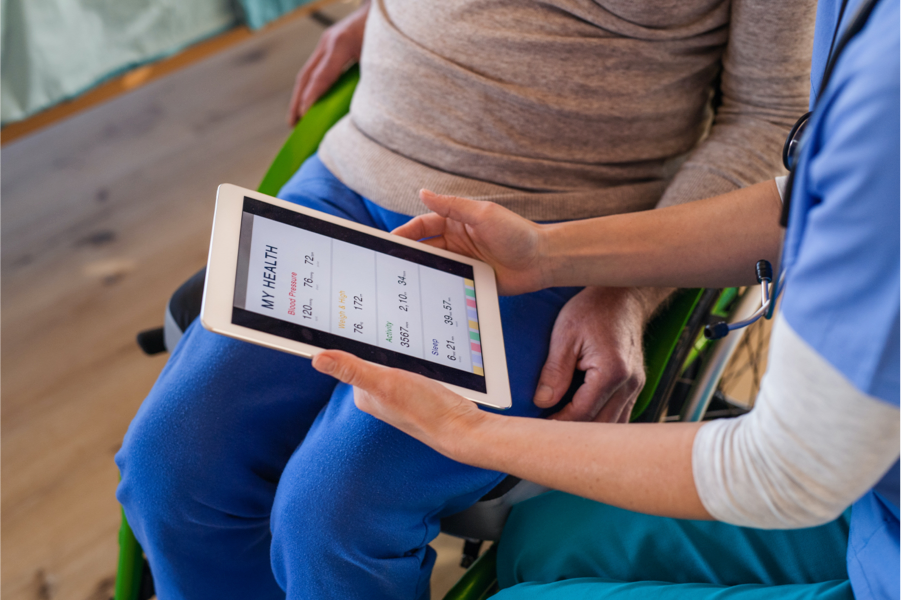
PROFESSIONAL DEVELOPMENT
How Travel Nurses Can Write a Winning CV: 5 Steps & Tips
-
 EveryNurse Staff
EveryNurse Staff
- Last Updated: 10/12/2020

The career of a travel nurse is rapidly gaining momentum.
In the United States, because of the nationwide nursing shortage, hospitals are looking for more opportunities to increase their staff, especially during the current pandemic, when there is an unprecedented demand for more healthcare professionals.
With that in mind, the travel nurse employment rate is expected to grow 15% by 2026, with an average salary of $65,000 a year. And, if you have considerable experience, some states can offer more than $100,000 a year.
But besides being a chance to earn good money, this is also a great opportunity to gain some valuable experience in nursing. Because travel nurses often get a chance to work in different hospitals around the country and even the entire world, it is a great opportunity to enrich their resumes.
However, as this profession becomes more and more popular, very soon, as a nurse, you will face strong competition, so you need to know how to present yourself and your experience well.
Taking that into consideration, your resume is the first thing you should work on to make sure it represents you the way you want it to.
So, without further ado, let’s walk you through a few essential steps and tips on how to build a CV for a travel nurse career that will successfully represent you as a professional.
Step #1: Choose the Right Format
Before writing your resume, you should first decide how the end result should look like.
Choosing a resume format will determine which sections of your resume will be primary and secondary, helping you turn the employer’s attention to certain details of your professional experience.
There are three types of CV formats:
- This format allows you to list your experience in reverse-chronological order. You start with contact information and a summary statement, highlighting your professional experience followed by your skills, education, personal development, and other additional details.
- Here, instead of consistently going through your work experience, you start with your skills. Respectively, the Skills and Experience sections will switch places.
- This format is a blend of the first two. The structure is the same as in the chronological format, but the Experience and Skills sections usually include more details
Pro writing tip!
All three CV formats have their advantages.
The chronological format helps you consistently show your advancing career path. You can use it if you’ve spent several years in the same industry.
However, if you’ve gained your experience in multiple different industries besides nursing, functional format is a good choice for you. It can help highlight transferable skills that you’ve gained during other job experiences that are not related to nursing.
The mixed format is a great choice if you want to get the advantages of both chronological and functional formats. Keep in mind, though, that the choice of a resume format depends on your current career needs and what your employer is looking for.
Step #2: Write a Header with a Summary Statement
Now, let’s take a look at what catches the employer’s eye in your CV first – your summary statement. A resume summary statement is a brief section that emphasizes your unique value as a professional.
For a travel nurse, it’s an opportunity to offer your skills and experience to solve certain needs of an employer, for example, implement and do the trial run of a patient registration software or to help with an increasing demand for patient care during the COVID-19 pandemic. So, what do you need to take into consideration when writing a resume summary statement?
- Start a summary with your strong qualities. Keeping in mind which employee qualities the employer is interested in, use a couple of your positive qualities to introduce yourself in a resume summary.
- Mention your experience. Continue your summary by highlighting your experience and certifications to increase your CV’s competitiveness.
- Address the employer’s goals and how you can help achieve them. Include a few essential skills that, together with your experience, can help the employer achieve their goals.
Don’t make your summary statement too extensive. Keep it no longer than five sentences, and break it down using bullet lists, if possible.
Pro writing tip!
Since your summary statement is the first thing the employer sees, you cannot embarrass yourself by leaving out grammatical mistakes. So, make sure you get personal statement help and use tools like Grammarly and Hemingway App to proofread this section as well as your entire resume.
To further improve this section of your resume, include the right keywords in your summary statement. To collect these keywords, browse the description of a job you’re applying for. For instance, you can search for keywords that describe the employer’s need in a professional like you and then include them in your summary statement.
Step #3: Make Your Experience the Highlight of Your Resume
While for the professionals, who are only starting their travel nurse career, the functional resume format with the highlight on skills is more advisable, in most cases, the chronological format is what employers are looking for in a travel nurse resume.
That being said, your experience is the section of your resume that requires close attention. It is a chance for you to show your entire career path from your first job after getting a BSN degree to your current job position.
So, what do you need to do to make it the highlight of your resume?
- Start with your current job position. List details of your employment, describe the type of facility, the unit you’re working in, unit trauma levels, the number of unit beds, as well as your caseload. List these details when describing your previous work experience as well.
- Mention your employment type. Whether you’ve been hired through an agency or under a travel contract, make sure you include this information for the employer’s reference.
- Describe your tasks in detail. When hiring travel nurses, hospitals expect them to perform certain tasks in the areas where their facilities are understaffed. So, make sure your Experience section contains all the details about your tasks and duties.
Pro writing tip!
Much like with a summary statement, the Experience section of your CV should include relevant keywords. To make a keyword-optimized resume for a travel nurse position, you can use the same trick and go through the job description to see which experience the employer is looking for and add related keywords to your Experience section:
Step #4: Dedicate Separate Sections to Skills and Certifications
Besides experience, a potential employer will be looking for the details about your skills and certifications to ensure that you are the professional you’re claiming to be.
When writing a section with your certifications, make sure that it includes:
- the full name of the license or certification
- the body that issued the license or certification
- license number
- expiration date
You can include this section either before the Experience section or after it, depending on whether the employer is asking for the information about certifications in a job description upfront.
As for writing the Skills section, you need to keep in mind the following:
- Start with the skills the employer is asking for. Often, hospitals are interested in your professional skills as well as computer skills, like the knowledge of Cerner and other health information technology tools.
- Add communication skills. For a travel nurse, communication skills are essential because you will rely on them every day when communicating with patients. Make sure your CV highlights these skills as well.
- Include additional skills. Depending on a job position, your employer might be interested in a variety of other skills, like the knowledge of writing tools or even leadership and delegation skills. So, browse the job description to see if there is a demand for skills other than those directly related to nursing.
Pro writing tip!
Step #5: Don’t Forget About Additional Experience Related to Nursing
Usually, employers ask about the additional experience related to nursing during the interview, but why wait until then?
So, if you’ve applied the skills related to nursing somewhere else, for instance, when volunteering, make sure that your CV has this information. It can give you a competitive advantage during the recruitment process.
In general, including additional experiences, such as volunteering, is beneficial for the travel nurse career. And, if you’re looking for volunteering opportunities to boost your travel nurse career, EveryNurse.org can help you find programs that will fit your nursing profile and get more professional experience.
Our team helps nurses and medical professionals search for top nursing programs, get scholarships, and find a career in nursing that fits their interests. Whatever step you’re on in your career path right now, we’ve got you covered!
Start Building a Travel Nurse CV for Employment Success!
Considering the national nursing shortage and the growing demand for nurses nationwide and globally, the career of a travel nurse will soon be one of the hottest ones.
If you’re interested in a career path like this, start building your future as a travel nurse today by writing a professional CV. To make sure your CV represents you well as a professional, choose the appropriate format, top your resume with a good summary statement, highlight your experience, skills, and certifications. Also, don’t forget to include additional experience, such as volunteering, to make your resume more competitive.



















